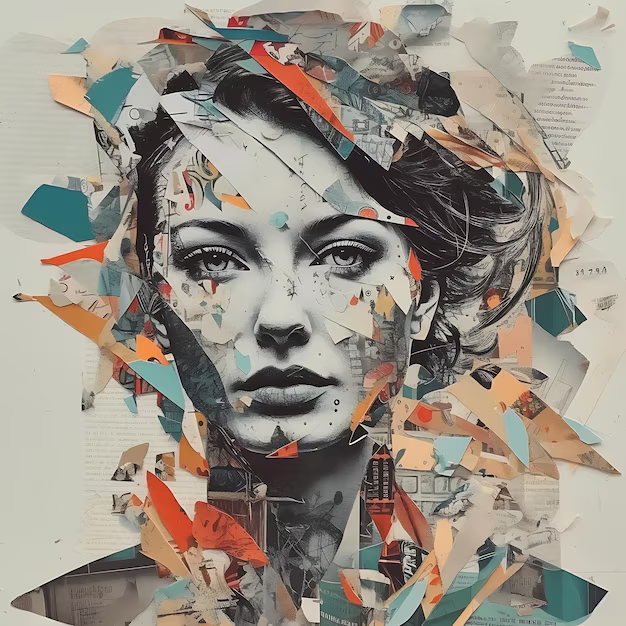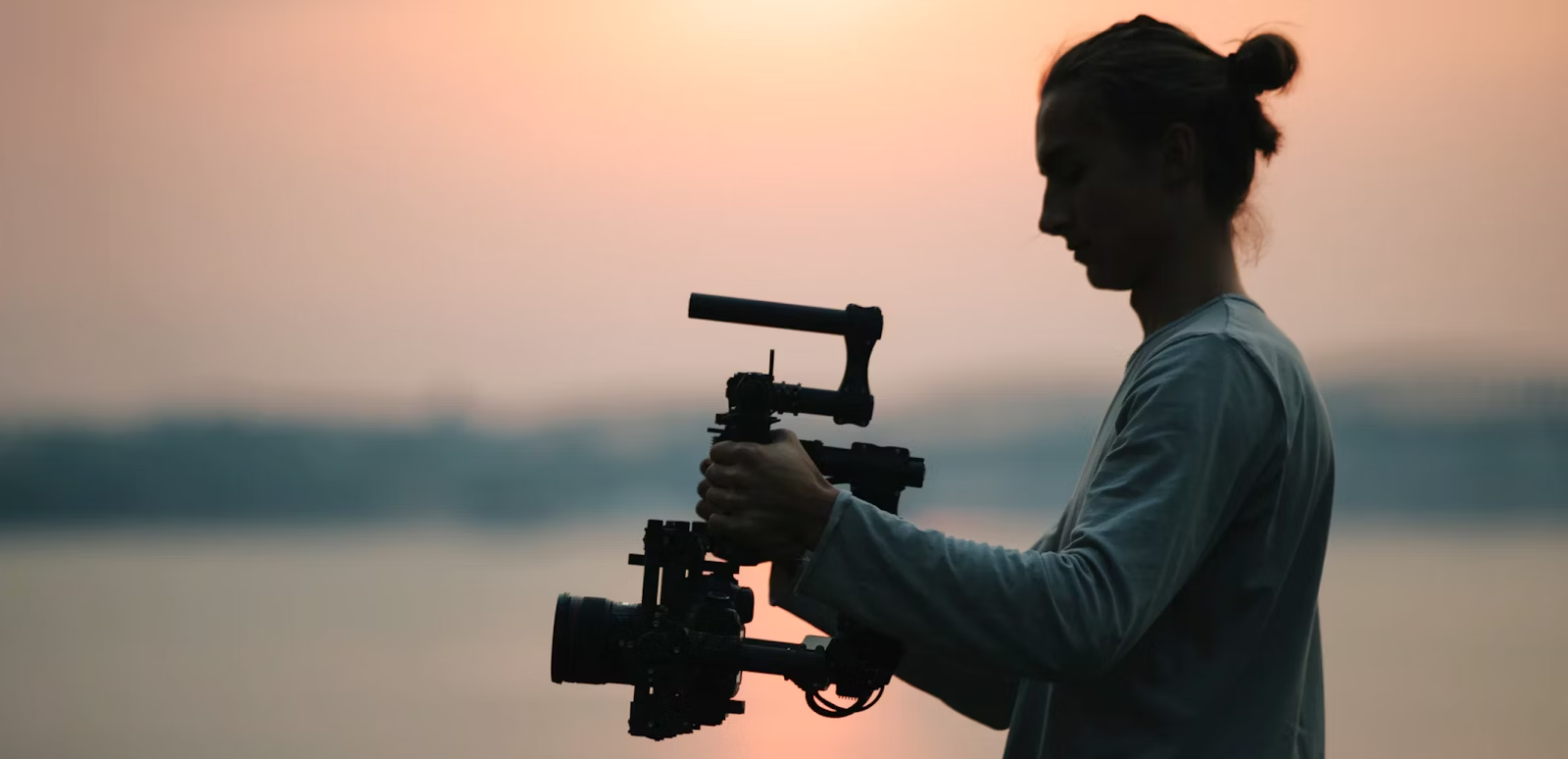NEWS
Opinions
Beyond the Eye, Zaria Forman's Pastels as Witnesses to Climate Change
Zaria Forman's hyperrealistic pastel drawings are far more than mere depictions; they are a powerful visual chronicle of climate change, inextricably linking the raw beauty of ice landscapes and seas with their fragile vulnerability. Her work is a silent yet urgent appeal, foregrounding the Earth's beauty to remind us of what is at risk of being lost. The central question that arises when viewing her works is how Forman manages to achieve this intensity, which goes beyond pure aesthetics to establish a deep emotional connection to climate change, prompting viewers to reflect and act.
This article will analyze Forman's unique working method with pastels and her fingers in detail, a method inspired by personal journeys and a remarkable collaboration with scientific institutions such as NASA. It will highlight how her art serves as a testament to climate change and redefines the significance of art and environmental awareness. Her works are not just representations, but invitations to engage with the global environmental crisis on a deeply personal level.

Technique and Material, Hyperrealism with Pastel
Zaria Forman's artistic practice is characterized by a unique fusion of material, technique, and conceptual depth. Her choice of soft pastels and her specific application method are not accidental, but an integral part of her message.
Material Choice, The Intimacy of Pastel and the Reflection of Fragility
Forman chooses soft pastels, a powdery substance that she rubs onto the surface with her fingers and palms. This method allows her to create the subtle textures, light reflections, and atmospheric effects of ice, water, and clouds with meticulous precision. To depict the finest details, such as cracks in the ice or the texture of wind-blown snow, she even breaks the pastel sticks into sharp shards.
The direct touch of the pigment with her fingers creates a unique haptic, almost meditative connection between artist and work. It is a process that can take months, allowing Forman to deeply connect with the landscape, to "shape it and re-experience it," a "way of coming home." The simplicity of the process, where the paper is cut and the marks are made, teaches her "letting go" and the acceptance of "mistakes," as the surface can only absorb a few thin layers of pigment, leaving little room for corrections. This choice of material is not only technical but profoundly conceptual. The haptic method and the inherent fragility of the pastel reflect the physical and metaphorical fragility of the depicted landscapes. This creates a deeper, almost physical empathy in the viewer, who unconsciously connects the materiality of the work with the transience of the motif. The artist is physically deeply connected to the material and the process, which is reflected in the fragility of the pastel, explicitly compared to the fragility of the ice landscapes. This conscious artistic decision goes beyond pure technique, creating a symbolic resonance where the physical experience of the work, its delicacy and the need for care in handling it, reinforces the emotional and intellectual engagement with the subject, the threat to nature. The "intimacy" of the artist with the material transfers to the viewer's intimacy with the motif.

Hyperrealism, Precision as an Amplifier of Urgency
Forman's hyperrealistic style, often mistaken for photographs, compels viewers to look more closely and grasp every detail. From the finest cracks in the ice to the reflective surfaces of the water, she captures everything with meticulous precision. She aims to "depict the exact scene I witnessed" 90% of the time to remain true to the landscape. The realism serves not only to portray beauty but also to amplify the urgency of the depicted scene. By rendering the landscapes as true to life as possible, she makes the abstract concept of climate change "more concrete and tangible." The "ultra-realistic drawings" allow viewers to experience these places "firsthand," even if they will never visit them.
Forman's hyperrealism evolves from a mere depiction of beauty to a tool that conveys the urgency and incomprehensible scale of climate change. Her work with NASA scientists inspired her to work with "even greater precision," while simultaneously allowing her to make the overall composition more abstract to convey the sheer immensity of the loss. The "geometric patterns of cracked ice sheets" and the "texture of wind-blown snow" became a "visual language of time and pressure." The extreme detail in the "geometric patterns" now serves to convey the immensity of the loss, which is difficult to grasp even after thousands of miles of flight. Realism becomes a means to make the unfathomable tangible and to underscore the urgency of "accelerated loss" by making the visual "stories and clues" in the ice structures legible.
Scale and Impact, Immersion and Overwhelm
The significance of the large-scale nature of many of her works is crucial to their impact. Forman works on canvases that often measure 5, 7, or even 10 feet. These enormous dimensions overwhelm viewers, giving them the feeling of standing directly in front of the depicted glacier or sea. From a distance, the works appear as "form, shape, color," but upon closer inspection, they reveal "intimate details of the ice," from crevices to cobalt blue pools, showing the effects of wind, wave, and sun on the surface.
The monumental size of Forman's works is a deliberate strategy to bridge the physical distance between the viewer and the threatened landscape. It creates an immersive experience that is not only visually but also emotionally overwhelming, thus fostering deeper empathy for the dwindling natural wonders. Forman herself describes how drawing large pieces is a way to familiarize herself with the landscape she wants to protect, a "way of coming home." This physical engagement of the artist with the scale of the motif transfers to the immersive experience of the viewer, promoting a deeper emotional connection. The size is not just impressive, but functional. It overcomes the abstraction and distance of climate change by physically drawing the viewer into the scene. This is especially important for places most people will never visit. The overwhelming feeling caused by the sheer size of the depicted ice forces a humility that, in turn, promotes a willingness to protect. The "dizzying perspective" in some works, which reflects the impossibility of grasping the true size, is made tangible on another level by the physical size of the artwork.

The Journey as a Source of Inspiration, From Expedition to Artwork
Zaria Forman's art is deeply rooted in her personal experiences and travels, which serve as the primary source of inspiration for her evocative depictions.
Personal History: A Legacy of Connection to Nature and Loss
Zaria Forman's deep love for nature and her environmental awareness were significantly shaped by her travels with her mother, Rena Bass Forman, a landscape photographer, to remote regions. Even in her childhood, she developed an appreciation for the "beauty and vastness of the ever-changing sky and sea."
The tragic story surrounding the planned Greenland trip with her mother, who passed away in 2011, posthumously became a central artistic and personal project. In August 2012, Forman led the "Chasing the Light" expedition, retracing the route of American painter William Bradford from 1869 and scattering her mother's ashes amidst the melting ice. This deeply personal farewell merged with the observation of global change. Her mother "remains part of the landscape she loved so much, even as it, too, changes and takes on a new form." The melting ice masses became a metaphor for "impermanence and the threat that climate change poses to our world." Conversations with local Inuit communities in Greenland, who spoke of ice fjords no longer freezing and the associated threats to their way of life, intensified this urgency. Forman's art is inextricably linked to her personal history of loss. The act of scattering her mother's ashes in the melting ice of Greenland transforms her individual pain into a universal allegory for global loss due to climate change. This creates a deeper emotional resonance, as the viewer perceives the abstract concept of climate change through the lens of a deeply human experience. Personal tragedy becomes an emotional anchor for the global crisis. By incorporating her own pain and grief over the loss of her mother into the depiction of melting ice, Forman makes the abstract and often dehumanized concept of climate change tangible and emotionally relatable for the viewer. It is an example of how art can convey the incomprehensible through the individual, and her works become "guardians of memories" of both her mother and a vanishing world.
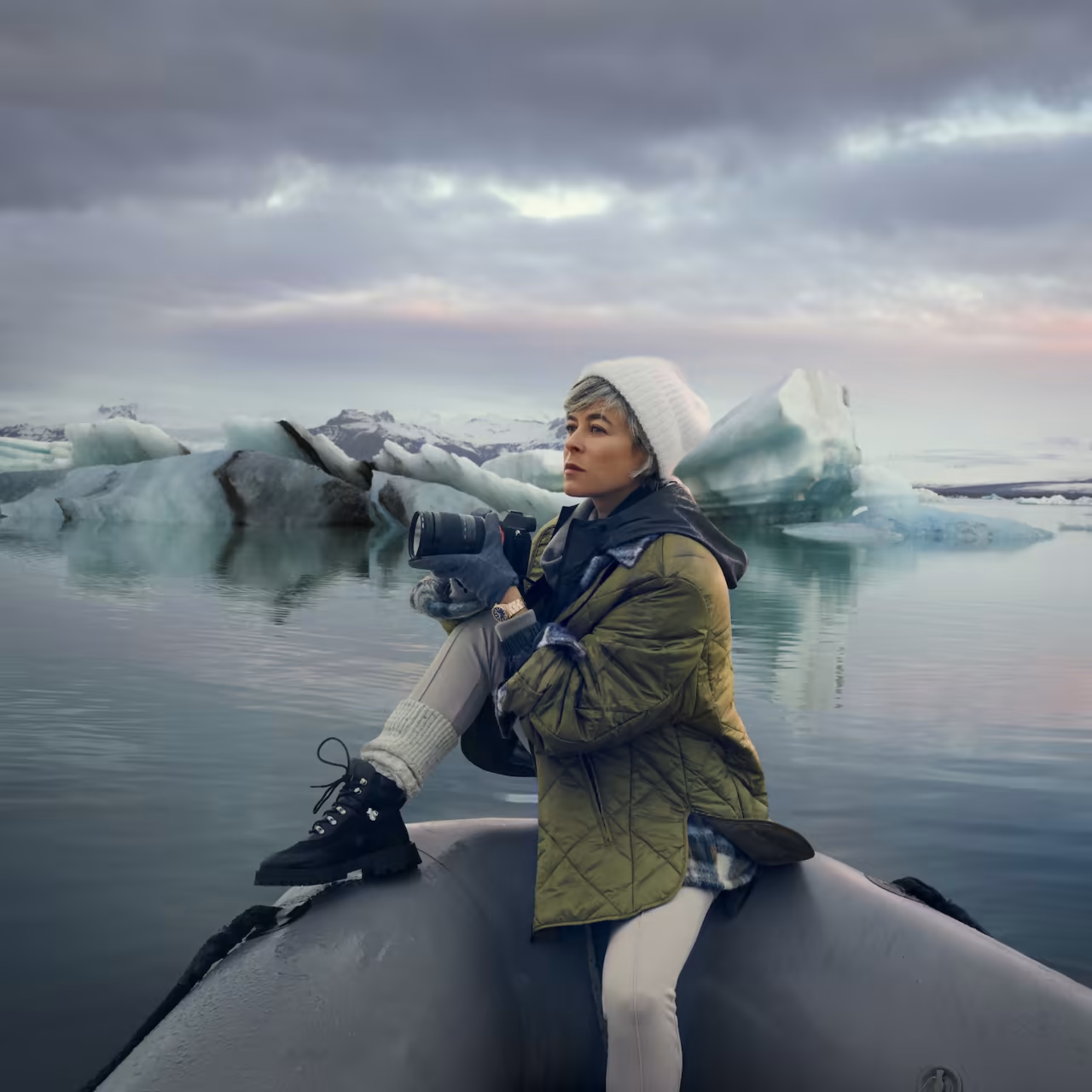
Scientific Collaboration, Art as a Bridge to Data Communication
Forman has collaborated multiple times with scientific institutions such such as NASA, particularly within the framework of the "Operation IceBridge" missions over Antarctica, Greenland, and the Canadian Arctic. These direct insights into scientific data and the close-up observation of melting ice informed her artistic practice and imbued her works with scientific relevance. The IceBridge experience "informed and elevated" her own practice of ice observation, and her drawing technique evolved towards "heightened precision and nuance." She learned to see "stories and clues in the geometric patterns of cracked sheets, and in the texture of wind-blown snow," with the "palette of blues" becoming a "visual language of time and pressure."
NASA explicitly invited Forman because art possesses a special ability to evoke emotions that scientific data alone often cannot convey. People make decisions based on emotions, and art can "bypass rational thought and speak directly to the heart." The collaboration with NASA is a poignant example of the growing recognition that art can play a crucial role in communicating complex scientific data to the public. Forman's art transforms dry statistics into visually and emotionally accessible narratives, promoting acceptance and understanding of the urgency of climate change. It is a model for interdisciplinary communication. This collaboration represents a paradigm shift in climate communication. It shows that scientific knowledge alone is often insufficient to mobilize the public. Forman's art serves as a "bridge" that closes the gap between scientific understanding and emotional response. It visualizes "accelerated loss" and turns it into a "clarion call for faster action" by transforming data into an experiential reality. The "visual language of time and pressure" that she develops through these observations is an artistic interpretation of scientific phenomena.
The Purpose of Art, Evoking Love to Protect
Forman's conviction is that art has a unique ability to evoke emotions that scientific data or statistics often cannot convey. She aims to awaken love and admiration for nature. She deliberately chooses to depict the beauty, not the destruction, of threatened places. Her hope is that viewers, by "experiencing the sublimity of these landscapes, will be inspired to protect and preserve them."
The psychological basis of her work is the realization that people make decisions and take actions primarily based on emotions. The desire to protect something arises from loving it. Her art is a "clarion call" for faster action against loss. Forman's "beauty over destruction" approach is a sophisticated psychological strategy. Instead of generating fear or guilt, she uses her art to evoke positive emotions like love and wonder, which serve as stronger and more sustainable motivators for environmental protection than mere facts or disaster scenarios. This is a plea for hopeful activism. This approach is a psychologically sound strategy based on behavioral psychology. Instead of moralizing or frightening, Forman seeks to build a positive emotional connection. This connection is intended to create an intrinsic motivation for protection that is deeper and more sustainable than a reaction to fear. Her art offers a "clarion call" that mobilizes through beauty, not shock, thus representing a more effective and sustainable form of environmental activism.
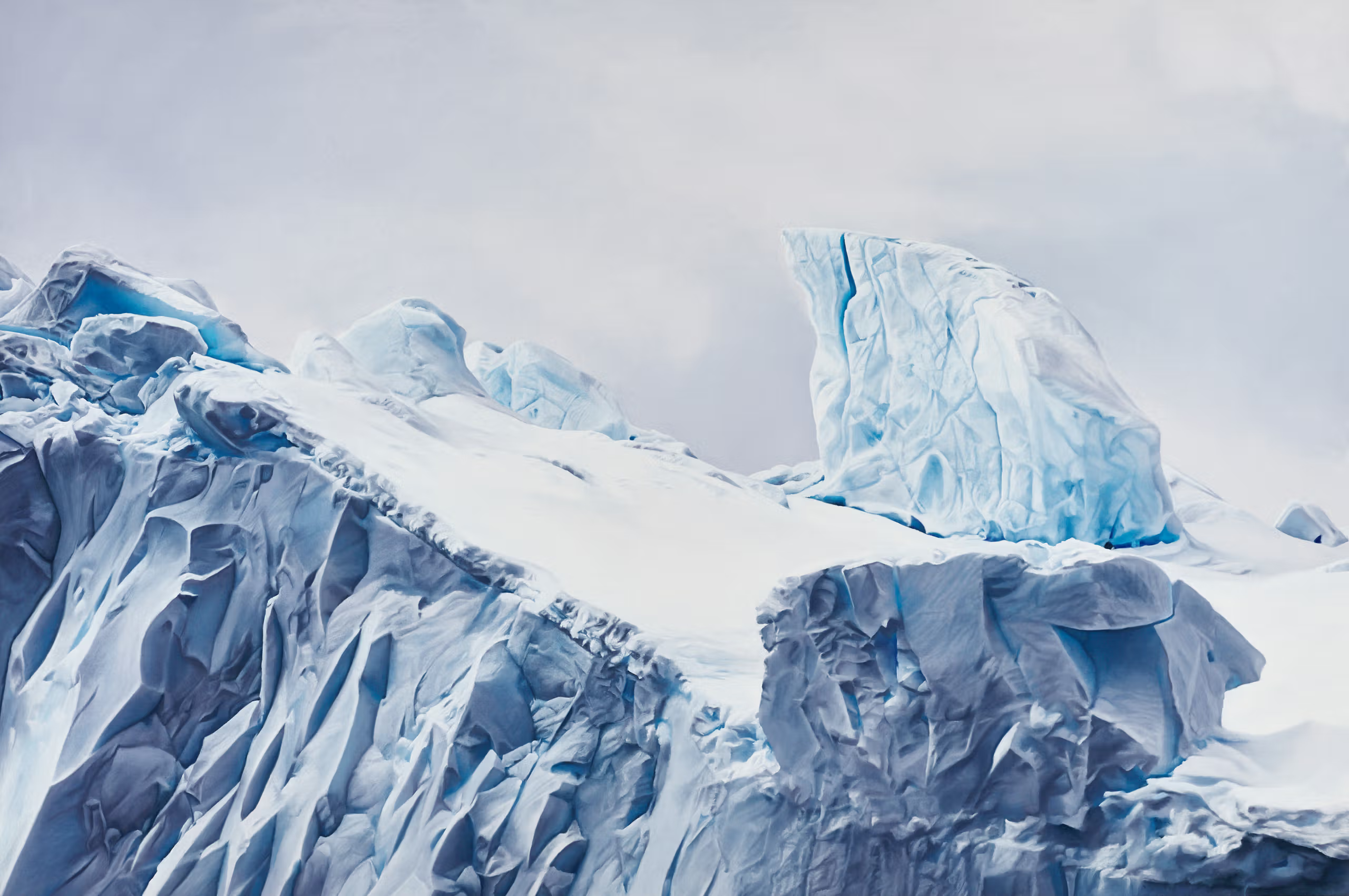
The Legacy of Art, Future Aspects and Philosophical Questions
Zaria Forman's work has garnered global resonance and raises important questions about the role of art in the age of the climate crisis.
Global Reach, A Message Without Borders
Zaria Forman's works have been exhibited worldwide. Although most of the listed exhibitions took place in the USA (New York, Seattle, Chicago, Boston, Saratoga Springs, among others), other sources confirm her presence in London, Cambridge, and Geneva (through the ballet "Giselle"). Her work has been featured in renowned publications such as The New York Times, National Geographic, The Wall Street Journal, and Smithsonian Magazine, as well as in media outlets like CBS, CNN, PBS, and BBC. Her 2016 TED Talk has over 1.6 million views, and she has spoken at Amazon, Google, and NASA. Her works were even used in the Netflix series "House of Cards."
A significant sign of her global reach and influence is her role as curator of the first permanent polar art exhibitions aboard the Lindblad Expeditions National Geographic Endurance and Resolution. These installations, which include artworks by over 35 artists and integrate multi-sensory elements (e.g., ice cores, sound recordings of melting ice), offer thousands of travelers an immersive educational experience and amplify her message internationally by "provoking change." Forman's global reach is not only an indicator of her artistic success but also of the universal resonance of her message. Her curatorial role on expedition ships is a strategic step to bring her art and the message of climate change directly to an engaged audience who often experience the depicted landscapes themselves, maximizing the emotional impact. This curatorial role transforms Forman from an individual artist into a designer of environmental education experiences. She uses the ships as floating galleries and educational centers that utilize a wide range of art forms to convey the complexity and urgency of climate change.
Documentation and Legacy, Visual Chronicles of Change
Forman's drawings serve as a form of historical documentation. As the glaciers and ice landscapes she depicts are constantly changing and melting, her works are a kind of "visual legacy" of these landscapes. She documents the landscapes as she found them at the time of her travels to create a visual record of these vanishing environments. Her art is explicitly conceived as historical documentation and a visual legacy of landscape change, capturing the fleeting beauty of environments heavily affected by climate change, such as the Arctic and the Maldives.
Her work Maldives No. 1, exhibited in the Environmental Impact exhibition, is an example; it depicts a stormy afternoon upon her arrival and hints at the "dire things to come." These pieces document the immediate and palpable effects of climate change on these landscapes. Forman's personal connection to these landscapes, such as scattering her mother's ashes amidst the melting ice in Greenland, imbues her work with a deeper layer of legacy. The icebergs and low-lying islands become a metaphor for impermanence and the threat that climate change poses to the world. By conveying "beauty rather than devastation," she aims to inspire viewers to protect and preserve these places, effectively creating a visual archive of what is at risk of being lost. Her art thus functions as a poignant historical record, capturing the current state of these endangered environments as they undergo significant ecological transformations.
The Artist's Role, Observer, Activist, Documentarian
Forman's work raises the question of the artist's role in the age of the climate crisis: Is the artist an observer, an activist, a documentarian, or all of the above? Forman herself sees herself as someone who documents climate change with pastel drawings. She is convinced that artists play a crucial role in communicating climate change, which is arguably the most important challenge facing the global community. She deliberately chooses to convey the beauty of threatened landscapes rather than focusing on destruction. Her hope is that by experiencing the sublimity of these places, viewers will be inspired to protect and preserve them.
Forman dedicates her career to illustrating climate projections, such as ice-free Arctic summers and rising sea levels, through an accessible medium that moves people in a way that statistics may not. Her work positions the artist as an important actor in the climate change debate, going beyond pure aesthetics to evoke a deeper emotional and action-oriented response. She is not only an artist but also a "guardian of memories," preserving the world's most vulnerable places through her emotionally charged and awe-inspiring creations. Her art is both a call to action and an elegy.
Zaria Forman is far more than a hyperrealistic artist; she is a visual chronicler of the global environmental crisis. Through her masterful command of pastel and her intimate, haptic application technique, she creates works that not only capture the meticulous beauty of ice landscapes and seas but also convey their inherent fragility in a deeply emotional way. Her art is inextricably linked to her personal journeys and a profound loss, which is reflected in a universal allegory of global change.
Her collaboration with scientific institutions such as NASA underscores the growing recognition that art can build a crucial bridge between complex data and human emotion, fostering deeper understanding and a stronger willingness to act. Forman's deliberate focus on beauty over destruction is a psychologically sound strategy that uses positive emotions as a catalyst for environmental protection. Her works, exhibited worldwide and presented in permanent installations on expedition ships, serve as a visual legacy of a changing world. They are a powerful, silent appeal that foregrounds the Earth's beauty to remind us of what we stand to lose and to move us to action.
Editor Picks
ART & BUSINESS
PAINTING & SCULPTURE
ARTIST VIDEOS

Painting
The Artistic Journey of Painter Andrew Scott, A Modern Master of Contemporary Expression
Andrew Scott
Andrew Scott
Painting
The Artistic Journey of Painter Andrew Scott, A Modern Master of Contemporary Expression
Andrew Scott is a renowned painter celebrated for his bold use of color, dynamic compositions, and fusion of classical and modern techniques

Photography
Norbert Von Niman’s Avant-Garde Art Journey and an Exciting Glimpse Into Tomorrow
Norbert Von Niman
Norbert Von Niman
Photography
Norbert Von Niman’s Avant-Garde Art Journey and an Exciting Glimpse Into Tomorrow
Norbert Von Niman is a talented contemporary artist known for his distinctive mixed-media works that explore themes of identity, culture, and humanity.

Environmental Art
Sculpting Beauty from the Earth, David Popa's Journey to Create Living Art
David Popa
David Popa
Environmental Art
Sculpting Beauty from the Earth, David Popa's Journey to Create Living Art
David Popa is an American artist and sculptor recognized for his striking land art that blends natural elements with artistic expression.

Drawing
Ed Fairburn, Transforming Maps into Uniquely Beautiful Art
Ed Fairburn
Ed Fairburn
Drawing
Ed Fairburn, Transforming Maps into Uniquely Beautiful Art
Ed Fairburn is a contemporary artist known for transforming vintage maps into intricate portraiture, blending cartographic detail with human identity to explore themes of memory, space, and artistic innovation.

Painting
Nick Sider, Crafting Hyperrealistic Masterpieces with Stunning Detail
Nick Sider
Nick Sider
Painting
Nick Sider, Crafting Hyperrealistic Masterpieces with Stunning Detail
Nick Slider is a renowned self-taught hyperrealistic painter based in New York City.
ART & LIFESTYLE
PHOTOGRAPHY
NATURE
PHOTOGRAPHY
Through the Lens, Photography’s Place Among the Fine Arts
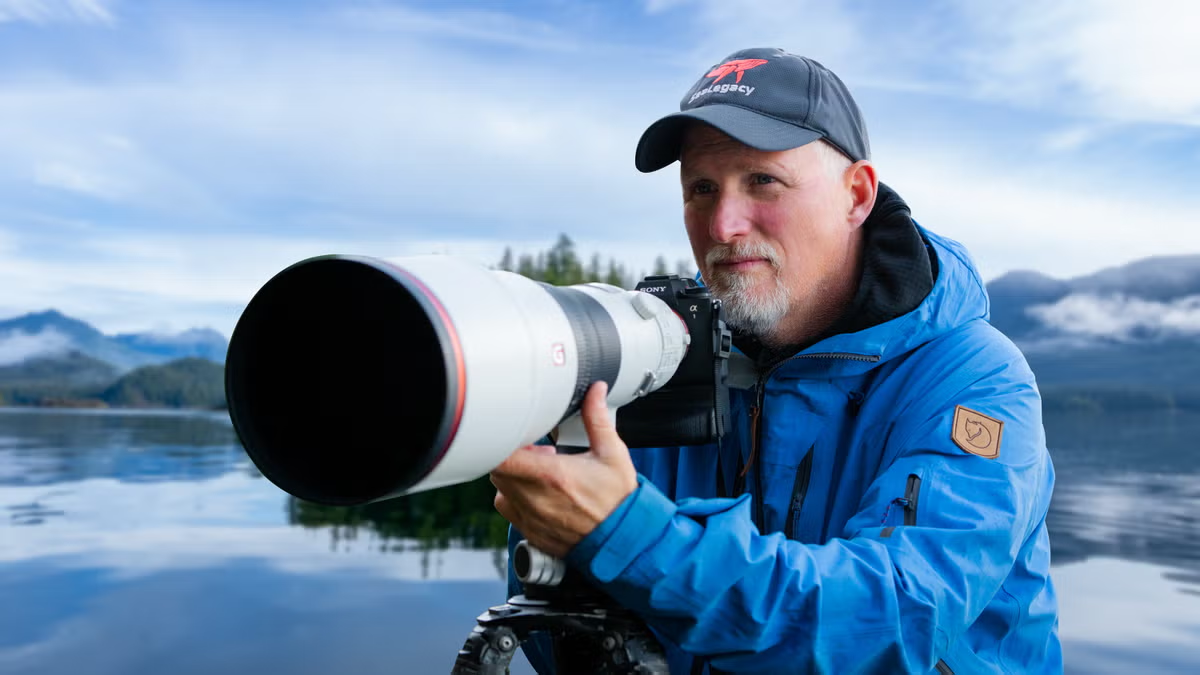
Photography
Paul Nicklen, The Arctic's Poetic Witness and Our Planet's Urgent Conscience
Paul Nicklen
Paul Nicklen
Photography
Paul Nicklen, The Arctic's Poetic Witness and Our Planet's Urgent Conscience
Discover how Paul Nicklen’s stunning photography bridges art and nature, capturing the urgent beauty of our fragile ecosystems. Through his lens, conservation becomes a visual narrative that challenges us to see, and protect, the wild world. Explore the evolving role of photography in environmental activism and art.

Photography
Mark Smith, Capturing the Wild in Flight
Mark Smith
Mark Smith
Photography
Mark Smith, Capturing the Wild in Flight
Mark Smith is not just documenting nature, he’s elevating it. Through his lens, we’re reminded that even the most common shoreline can be a theater of survival and wonder. Every raptor’s cry, every wingbeat, every stolen glance through the reeds is a story waiting to be seen, told, and cherished.

Photography
Aidan Bedford, Navigating Photography, Art, and Marine Nature
Aidan Bedford
Aidan Bedford
Photography
Aidan Bedford, Navigating Photography, Art, and Marine Nature
Dive into the compelling marine photography of Aidan Bedford, where art meets nature and the ocean’s fragile beauty is captured with striking clarity. His work challenges us to see the sea not just as a backdrop, but as a vital ecosystem demanding our attention. Discover how Bedford blends cutting-edge technology and ecological advocacy to reshape contemporary art’s conversation around marine environments.

Photography
Kyla McLay's Marine Photography, Between Nature and Narrative
Kyla McLay
Kyla McLay
Photography
Kyla McLay's Marine Photography, Between Nature and Narrative
Dive into the evocative world of Kyla McLay, where marine photography becomes a powerful dialogue between art and environmental urgency. Her stunning images reveal the fragile beauty of our oceans while challenging us to rethink our connection to nature. Discover how contemporary marine photography is reshaping artistic practice and ecological awareness, a vital conversation for our time.

Photography
David Preissel, Where Northern Vistas Echo Inner Rhythms
David Preissel
David Preissel
Photography
David Preissel, Where Northern Vistas Echo Inner Rhythms
Discover how David Preissel’s evocative wildlife and landscape art bridges the gap between scientific observation and artistic expression, offering a vital, nuanced perspective on nature in an era of environmental uncertainty. Explore the intersection of art, ecology, and activism in our latest feature.










